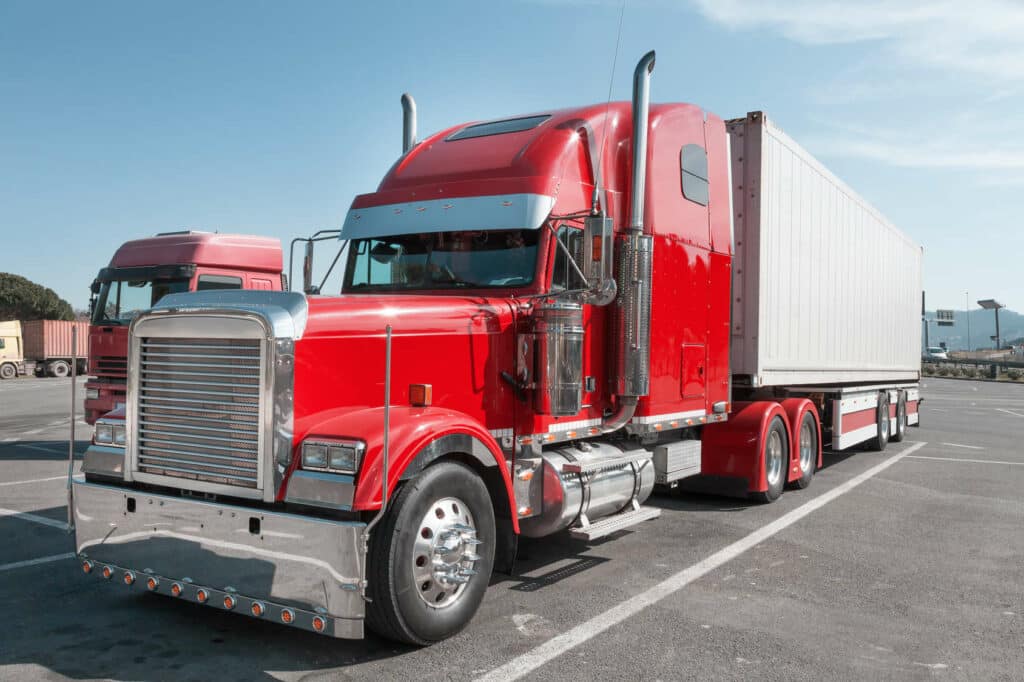Small fleet owners often wonder about the average factoring fee percentage per invoice for small fleets. Typically, these fees range between 1% and 5%. This article will help you understand the factors that affect these costs, such as customer creditworthiness and factoring agreements. We’ll also guide you on how to choose the right factoring service.
Key Takeaways
Factoring allows small trucking fleets to convert unpaid invoices into immediate cash, improving cash flow and operational efficiency.
Factoring fees typically range from 1% to 5% of the invoice amount, influenced by customer creditworthiness, invoice size, and the type of factoring agreement.
Understanding both factoring fees and potential additional charges is essential for small fleet owners to avoid hidden costs and make informed decisions.
What Is Factoring?

Factoring in the trucking industry involves selling accounts receivable to get cash quickly, a process known as invoice factoring. This financial service allows trucking companies to convert unpaid invoices into immediate cash, significantly improving cash flow without waiting for customer payments. Truck factoring involves selling outstanding invoices at a discount to receive immediate payment, providing a much-needed financial lifeline for small fleets.
There are two primary types of factoring agreements: recourse and non-recourse factoring. Recourse factoring requires the trucker to repay advances if customers fail to pay, placing the responsibility on the trucking company. On the other hand, non-recourse factoring protects carriers against the bankruptcy or insolvency of the shipper or broker, transferring the risk of nonpayment to the factoring company.
One of the significant benefits of using invoice factoring is the ability to maintain steady cash flow and cover operational expenses without the stress of delayed payments from customers. Outsourcing collections to the factoring company allows trucking businesses to concentrate on growth and operational efficiency.
Average Factoring Fee Percentage for Small Fleets

Factoring fees for small fleets typically range between 1% and 5% of the invoice amount. These fees can vary based on factors like customer creditworthiness, invoice amounts, and the type of factoring agreement—recourse or non-recourse. Reliable customers, for instance, can lead to lower fees, potentially placing costs at the lower end of the range.
Small fleet owners need to understand these factors to make informed decisions when selecting a factoring service. Awareness of how customer creditworthiness and invoice amounts influence fees can empower them to negotiate better terms and optimize cash flow strategies.
Being aware of the typical range of factoring fees and the elements that influence them helps small fleet owners navigate the complexities of freight factoring and select a service that aligns with their financial needs and operational goals, including freight factoring fees.
Factors Influencing Factoring Fees for Small Fleets
Several key factors influence the specific rates and fees associated with factoring for small fleets. Companies with higher monthly revenues often benefit from lower factoring rates, as larger invoice volumes can lead to discounts. The stability of the trucking business and the volume of freight being factored also play significant roles in determining the factoring rate.
Customer creditworthiness is another critical factor. Factoring companies assess the risk associated with each customer’s ability to pay. Customers with strong credit histories and good payment records can lead to more favorable factoring rates. Additionally, payment timing impacts factoring rates, with rates increasing if a factoring company collects payment after delays beyond the agreed terms.
The type of factoring agreement, whether recourse or non-recourse, also affects the fees. Recourse factoring generally has lower fees since the trucking company retains the risk of nonpayment. Longer contractual agreements may result in reduced factoring rates compared to shorter agreements, providing a financial incentive for committing to longer terms.
Potential additional charges, such as a 0.5% fee for every 10-day delay beyond 30 days, can also influence the overall cost of factoring. Understanding these factors helps small fleet owners anticipate costs and choose the most suitable factoring service for their needs.
Comparing Recourse and Non-Recourse Factoring Costs
The type of factoring program, whether recourse or non-recourse, directly impacts the fees charged. Recourse factoring is the most prevalent form of invoice factoring, where the business retains responsibility for unpaid debts. This arrangement typically results in lower fees since the trucking company absorbs the risk of nonpayment.
Non-recourse factoring, on the other hand, transfers the risk of nonpayment to the factoring company. This means that if customers fail to pay, the factoring company absorbs the loss. Due to the increased risk, fees associated with non-recourse factoring are generally higher. However, this type of factoring can provide peace of mind to trucking companies worried about customer insolvency.
The choice between recourse and non-recourse factoring often depends on the reliability of a company’s customers and its willingness to manage risk. Qualifying for non-recourse factoring usually requires customers to have strong credit histories and good payment records. Advanced rates, or the initial amount received upon factoring, are typically higher for recourse agreements compared to non-recourse arrangements.
Additional Fees to Consider
Common additional fees that can significantly impact the total cost of factoring include:
Setup fees
Wire transfer fees
Monthly fees
Extra charges for rapid funding options
Factoring fees are not the only costs to consider.
Understanding the full fee structure, including any hidden costs, is crucial when evaluating potential factoring companies. Application fees and credit check fees, often part of due diligence, can vary widely. Late fees can accumulate if payments are not received by the contract’s specified due date, adding to the overall cost.
Other potential fees include cancellation fees if a contract is terminated early, and customer service fees for accessing support services from the factoring company. Minimum volume requirements may also result in fees if the invoice count is below the threshold set by the factoring company, impacting the invoice value. Being aware of these additional fees helps small fleet owners avoid hidden costs and make more informed financial decisions.
How to Calculate Total Factoring Costs
Calculating the total cost of factoring involves more than just the factoring fees. Total factoring costs include both the factoring fees and any additional charges that may apply. The Total Effective Rate, a crucial metric, is calculated by dividing the total cost incurred by factoring by the total amount factored. This rate provides a true representation of the cost of factoring.
It’s essential to include all potential costs in the factoring contract to get an accurate picture of what factoring will cost. Higher invoice volumes can qualify a business for better factoring rates, as larger amounts often lead to discounts. Additionally, long-term contracts may yield more favorable rates compared to month-to-month agreements, which could be more expensive.
Understanding how to calculate total factoring costs enables small fleet owners to better manage their finances and select the most cost-effective factoring service.
Benefits of Factoring for Small Fleets

Before: Freight factoring offers numerous benefits for small fleets, starting with improved cash flow. Immediate cash flow enables small fleets to cover various operational expenses, ensuring business continuity and reducing financial stress. Factoring allows small fleet owners to operate without the burden of worrying about delayed payments from shippers.
After: Freight factoring offers numerous benefits for small fleets, including:
Improved cash flow
The ability to cover various operational expenses
Ensured business continuity
Reduced financial stress
The freedom to operate without worrying about delayed payments from shippers
Another significant advantage is the improvement in operational efficiency. With immediate payments from factoring, trucking companies can take on more jobs without cash flow concerns, ensuring timely payments for fuel and maintenance. Outsourcing collections and invoicing to factoring companies frees up time for fleet owners to focus on growth and strategic planning.
Factoring services also handle billing and collections, significantly reducing the administrative work for small fleet owners. Additionally, utilizing factoring eliminates the need for traditional loans, which can be challenging for small fleet owners to secure. Automating processes like invoice sending and follow-up through factoring companies reduces time and effort needed in administrative tasks.
Potential Risks of Factoring for Small Fleets

Despite its benefits, factoring comes with potential risks that small fleet owners should be aware of. One common issue is the reduction in profits due to the fees associated with the service. The impact of fees on profits includes not only the direct factoring fees but also hidden costs that can arise.
Factoring addresses cash flow problems caused by delayed payments, but this can lead to a reliance on factoring services for ongoing cash flow. Access to cash is critical for smaller trucking companies, and reliance on factoring for cash flow can create vulnerabilities in financial management.
Carriers should be cautious of the costs associated with factoring, including hidden costs and the overall impact on their cash flow strategy. Understanding the full cost structure is essential to avoid financial mismanagement and maintain a healthy balance sheet.
How to Choose the Right Factoring Company

Choosing the right factoring company is crucial for maximizing the benefits of factoring while minimizing costs. Look for indications that a factoring company is bank-owned, as this can enhance its reputation and reliability. Checking online reviews and memberships with organizations like the IFA can also provide valuable insights into a company’s reputation.
Always inquire about the fee structures to avoid unexpected hidden charges when working with factoring companies. Seek companies that promise transparent pricing without hidden fees. Assess the flexibility in the factoring agreement to meet your unique operational needs and scaling requirements.
Evaluate the customer service offered by the factoring company, as it directly impacts your interactions with your own clients. Look for factors that indicate a strong understanding of the industry, including specific contract terms that cater to trucking.
Steps to Get Started with Factoring
Getting started with factoring involves a few key steps. Begin by assessing your cash flow requirements to determine if factoring is the right financial solution for your trucking company. If your business cannot wait for payment on earned money, factoring may be a beneficial option.
The application process typically involves signing up for a free trial, guided by a Bobtail Account Executive. You will need to provide essential documents such as unpaid invoices, proof of delivery, and business information. Once approved by the factoring company, you can get paid by submitting your invoices for the factoring process.
Documentation for factoring includes scanning or uploading documents and entering invoice information. Proof of delivery or a signed Bill of Lading is required after completing the shipment. Upon successful approval, trucking companies gain access to immediate funds, enhancing their cash flow and operational efficiency.
Summary
In summary, understanding the average factoring fee percentage per invoice and the various factors influencing these fees is essential for small fleet owners. By exploring the differences between recourse and non-recourse factoring, the additional fees to consider, and how to calculate total factoring costs, you can make well-informed decisions. Factoring offers numerous benefits, including improved cash flow and operational efficiency, but it also comes with potential risks that must be managed carefully.
Choosing the right factoring company and following the correct steps to get started can make a significant difference in your trucking business’s financial health. By leveraging the insights provided in this blog, small fleet owners can optimize their cash flow strategies and ensure their business thrives in a competitive market.
Frequently Asked Questions
What is invoice factoring?
Invoice factoring is a financial service that enables businesses, such as trucking companies, to sell unpaid invoices to a factoring company at a discount for immediate cash. This process helps improve cash flow and provides quick access to funds without waiting for clients to pay.
How much do factoring fees typically range for small fleets?
Factoring fees for small fleets typically range from 1% to 5% of the invoice amount. It’s essential to consider these costs when evaluating your financing options.
What is the difference between recourse and non-recourse factoring?
The primary difference between recourse and non-recourse factoring is that recourse factoring holds the trucking company responsible for repayment if customers fail to pay, whereas non-recourse factoring shifts that risk to the factoring company. Understanding this distinction is crucial for making informed financing decisions.
What additional fees should I consider when choosing a factoring service?
When selecting a factoring service, consider additional fees such as setup, wire transfer, monthly, application, credit check, late, cancellation, and customer service fees. These can significantly impact your overall costs and should be evaluated carefully.
How can I calculate the total cost of factoring?
To calculate the total cost of factoring, sum the factoring fees and any additional charges, then divide this total by the amount factored to obtain the Total Effective Rate. This approach provides a clear understanding of the costs involved in the factoring process.

